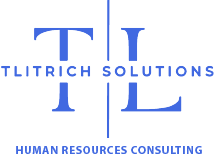Starting a small business is an exciting journey filled with opportunities and challenges. At TLitrich Solutions, we understand the complexities involved in turning your entrepreneurial dreams into reality. To help you navigate this process, we’ve created a comprehensive checklist that covers the essential steps you need to take. Whether you’re a first-time business owner or looking to expand, this guide will provide a clear roadmap for success.
1. Develop a Business Plan
A well-crafted business plan is your roadmap to success. It should outline your business goals, strategies, market research, and financial projections. Here’s what to include:
- Executive Summary: A brief overview of your business and its goals.
- Company Description: Detailed information about your business, the problems it solves, and your target market.
- Market Analysis: Research on your industry, market size, and competitive landscape.
- Organization and Management: Your business structure and the team behind your business.
- Products or Services: What you’re selling and how it benefits your customers.
- Marketing and Sales Strategy: How you plan to attract and retain customers.
- Financial Projections: Revenue forecasts, profit and loss estimates, and funding requirements.
2. Choose a Business Structure
Selecting the right business structure is crucial for your legal and financial responsibilities. The most common structures include:
- Sole Proprietorship: Simple and easy to establish, but with personal liability.
- Partnership: Involves two or more people sharing profits, losses, and liabilities.
- Limited Liability Company (LLC): Offers liability protection with less formality.
- Corporation: More complex, with separate legal status from its owners.
3. Register Your Business
Once you’ve chosen your business structure, it’s time to register your business name. This step involves:
- Choosing a Business Name: Make sure it’s unique and not already in use.
- Registering with the Government: Depending on your location, this may include state and local government registration.
- Obtaining Necessary Licenses and Permits: Ensure you’re compliant with local, state, and federal regulations.
4. Secure Financing
Starting a business often requires capital. Explore various financing options, such as:
- Personal Savings: Using your own money to finance your business.
- Loans: Traditional bank loans, SBA loans, or online lenders.
- Investors: Venture capitalists or angel investors willing to fund your business.
- Grants: Government or private grants that don’t require repayment.
5. Set Up Your Business Location
Your business location can be physical, online, or both. Consider the following:
- Home Office: If you’re starting small, a home office might be sufficient.
- Retail or Office Space: Depending on your business type, you might need to lease or purchase commercial property.
- Online Presence: A professional website and e-commerce platform if applicable.
6. Create a Brand Identity
Your brand is how your customers perceive you. Build a strong brand identity by:
- Designing a Logo: Create a memorable logo that represents your business.
- Creating a Website: Develop a user-friendly, informative, and visually appealing website.
- Establishing Social Media Presence: Engage with customers on platforms like Facebook, Instagram, LinkedIn, and Twitter.
7. Establish Your Team
As your business grows, you’ll need to build a team. Consider:
- Hiring Employees: Full-time, part-time, or freelancers.
- Creating Job Descriptions: Clear and concise roles and responsibilities.
- Setting Up Payroll and Benefits: Competitive salaries, health insurance, and other benefits.
8. Develop a Marketing Plan
A strong marketing plan will help you attract and retain customers. Key components include:
- Market Research: Understanding your target audience.
- Marketing Channels: Social media, email marketing, SEO, and paid advertising.
- Content Strategy: Creating valuable and relevant content to engage your audience.
- Budget Allocation: Determining how much to spend on each marketing activity.
9. Plan for Taxes
Understand your tax obligations to avoid any surprises. This includes:
- Registering for an Employer Identification Number (EIN): Necessary for tax purposes.
- Understanding Sales Tax Requirements: If you’re selling products.
- Keeping Detailed Financial Records: Accurate bookkeeping is crucial for tax filings.
10. Set Up Accounting Systems
Efficient accounting systems help manage your finances. Consider:
- Accounting Software: Tools like QuickBooks, Xero, or FreshBooks.
- Hiring an Accountant: Professional help can ensure your financial health.
- Tracking Expenses and Revenue: Regularly monitor your cash flow.
Conclusion
Starting a small business is a multifaceted endeavor that requires careful planning and execution. By following this comprehensive checklist, you can set a strong foundation for your business. At TLitrich Solutions, we’re here to support your Human Resource needs every step of the way. Contact us today for personalized HR consulting services tailored to your business needs.
About TLitrich Solutions: At TLitrich Solutions, we specialize in providing comprehensive HR services to small and medium-sized businesses. Our expertise helps businesses navigate the complexities of human resources, ensuring they build strong, compliant, and productive teams.
